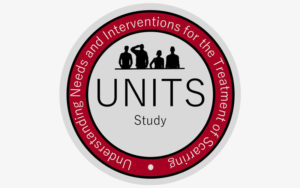
Understanding the Needs and Interventions for the Treatment of Scarring (UNITS)
Aim
This research aimed to investigate the psychosocial impact of appearance-altering injuries (e.g. blast injuries resulting in scarring and limb loss, scarring from burns or gunshot wounds) sustained during operational deployment or field training on UK military personnel, ex-service personnel, and their families. This research specifically focused on understanding how issues and concerns surrounding body image, self-esteem, identity and overall adjustment to an altered appearance, may affect psychosocial wellbeing. The overall objective of this project was to determine how to adapt existing civilian interventions and/or develop new interventions tailored to the needs of the Armed Forces community to help support adjustment and psychosocial wellbeing.
Background
Research conducted with members of the general population indicates that, an appearance which is different from ‘the norm’ and considered to be disfiguring by the affected person or others, can present significant psychological and social challenges. These can include negative impacts on body image, self-esteem, confidence and feelings of anger and hostility. Social difficulties can include managing the stigmatising reactions and behaviours of others (such as staring, inappropriate comments, avoidance and unsolicited questions about their appearance), concerns about its impact on the ability to maintain and establish intimate relationships (particularly after burns or limb loss), and barriers to fulfilling employment. For some, this can result in social avoidance and isolation associated with the distressing belief that they are being negatively evaluated based on how they look.
Although there is considerable similarity in the challenges facing people with an unusual appearance regardless of its type or cause, research with those who have sustained a burn injury indicates trauma symptoms are positively associated with appearance concerns. This highlights the importance of paying particular attention to appearance-related issues when supporting patients affected by traumatic appearance-altering injuries. Yet, despite a sizeable body of evidence into the psychosocial issues surrounding visible difference, there is a dearth of published research focusing on understanding the specific psychological and social needs of men and women who have sustained disfiguring injuries as a result of military conflict (for example, burn injuries, scarring, or limb loss). Likewise, the needs of their families have been overlooked by research.
Method and Results
To address the aims and objectives of this project four studies have been conducted:
- A gap analysis consisting of a review of existing literature and stakeholder engagement determined what is already known about the experiences, needs and service provision for this specific group of serving/ex-service personnel and their families. This review indicated just four existing studies, three of which were from the US and one from Turkey. The evidence from the four papers indicates that veterans with appearance-altering injuries may experience appearance related distress and other mental health concerns related to their changed appearance. The paper from this review has been published and be accessed here:
Reference: Keeling, M., Williamson, H., Williams, V., Kiff, J, & Harcourt, D. (2020). Body image concerns and psychological wellbeing among injured combat veterans with scars and limb loss: A review of the literature. Military Behavioral Health, 9, 1.
- A qualitative study of one-to-one interviews aimed at gaining an understanding of the experiences of serving/ex-service personnel who sustained appearance-altering injuries during deployment or field training and family members of serving/ex-service personnel with these injuries. The focus of these interviews was to understand the effect of any appearance-related concerns on overall psychosocial wellbeing and adjustment. An additional qualitative study of interviews with civilian health professionals was conducted at the same time to understand civilian health professionals’ perspectives of the appearance-related challenges and service needs of ex-service personnel with these injuries. Overall these studies found that personnel, ex-personnel and their families reported experiencing some concerns related to their/their family members’ changed appearance, mostly due to unwanted public attention. Health Professionals reported feeling ill-equipped to support appearance related concerns and would welcome training or guidance in how to raise and address these issues. The papers from these studies are being prepared and will be submitted to peer review journals.
- A quantitative study using surveys to determine in what ways the experiences and needs of ex-service personnel who sustained appearance-altering injuries in a military context differ or are similar to the experiences and needs of individuals without a military background who have sustained similar injuries. The results of this survey highlight that while there are similarities in their experiences, military nuances exist, meaning existing interventions developed for civilians can act as a guide but need to be adapted to meet the needs of military personnel, ex-personnel, and their families. The paper from this study is currently being prepared for submission to a peer review journal.
- Testing the acceptability and feasibility of psychosocial interventions to meet the needs of people affected by appearance changes due to military conflict. A selection of existing interventions and resources developed for civilians with appearance-altering injuries aimed at alleviating appearance related psychological distress were adapted for use with military populations. Relevant stakeholders and veterans with lived experience of conflict-related appearance-altering injuries were consulted and shown the resources to establish their acceptability and feasibility, with positive outcomes. These resources now require further development based on the outcome of the acceptability testing and robust evaluation before being made available.
Next Steps
We are now seeking funding for phase 2 of this work. This would enable us to:
- complete the development of these support resources aimed at alleviating and minimising the impact of appearance-related psychological distress;
- fully evaluate the resources to ensure they are effective at alleviating appearance-related distress;
- disseminate and share the resources with the military personnel, veterans, their families, and those who provide support services to them, who could benefit from them.

